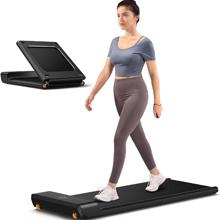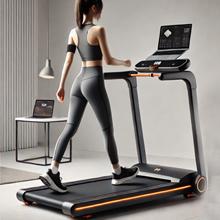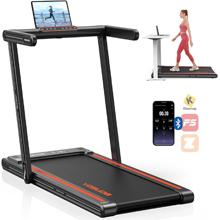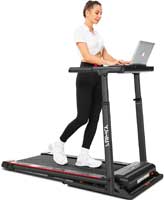Walking treadmills are growing in popularity for their compact design and office-friendly features. But what happens when you want to increase your intensity—can a walking treadmill handle running or jogging? Let’s break down everything you need to know to make an informed decision.
Key Features: Why Walking Treadmills Differ From Regular Treadmills
Before you lace up your running shoes, it’s essential to understand the design limitations of walking treadmills:
- Lower Speed Limits: Most walking treadmills cap at 4 mph, ideal for walking but unsuitable for running.
- Smaller Motors: Built for steady, low-speed use, their motors lack the power to handle running.
- Compact Belts: Narrower and shorter belts don’t provide enough room for a full running stride.
- Minimal Shock Absorption: Less padding makes jogging or running harder on your joints.
By design, walking treadmills cater to low-impact activities like walking, making them a poor match for high-intensity running sessions.
Checklist: Can You Safely Run Or Jog On Your Walking Treadmill?
Ask yourself these questions before attempting higher speeds:
- What’s the Speed Limit?
- If the treadmill maxes out at 4 mph, it’s unsuitable for running.
- Is the Belt Size Sufficient?
- Belts under 50 inches in length restrict a comfortable running stride.
- Does It Have Sufficient Stability?
- Lightweight frames may wobble during high-impact activity.
- What’s the Motor’s Continuous Power Rating?
- Anything below 2.0 CHP may overheat during jogging or running.
- Are There Safety Features?
- Check for handrails and emergency stop buttons to reduce risks.
Step-By-Step: How To Test A Walking Treadmill For Jogging
- Check Manufacturer Guidelines:
- Review the treadmill’s manual for speed and usage recommendations.
- Test The Belt Stability:
- Start walking at 3 mph and slowly increase to 4 mph. Observe if the treadmill shakes.
- Assess Shock Absorption:
- Lightly jog for 30 seconds. Does it feel hard on your knees?
- Monitor The Motor:
- After 10 minutes, check for overheating or unusual noises.
- Ensure Safety:
- Always have an emergency stop cord attached when jogging.
Pros and Cons
| Aspect | Walking Treadmill | Running Treadmill |
|---|---|---|
| Speed | Limited to walking speeds | Supports walking, jogging, running |
| Belt Size | Narrow and short | Wide and long for full strides |
| Motor Power | Low (under 2.0 CHP) | High (2.5–4.0 CHP) |
| Portability | Compact and lightweight | Heavy but durable |
| Durability Under Running | Not built for high-impact use | Designed for running forces |
Specific Examples
- Walking Treadmill in an Office: A walking treadmill shines in work environments where users need to stay active while working. Jogging on it could cause wobbling and damage the motor.
- Home Gym with Limited Space: While a walking treadmill fits snugly into small spaces, it won’t accommodate the stride length needed for running.
- Fitness Enthusiast on a Budget: If you aim to jog or run daily, investing in a regular treadmill with higher motor power is more cost-effective long-term.
Alternatives: What To Do If You Want To Run
If you’re serious about jogging or running, here’s how to make the switch:
- Upgrade to a Hybrid Treadmill: These models combine compact designs with moderate running capabilities.
- Invest in a Dedicated Running Treadmill: Opt for models with speeds up to 12 mph and incline options for versatility.
- Take It Outdoors: Jogging or running on outdoor trails offers a natural, budget-friendly alternative.
Conclusion
While walking treadmills are fantastic tools for staying active during low-impact activities, they aren’t designed for running or jogging. Attempting high-intensity workouts on a walking treadmill risks safety and equipment damage. For best results, use a walking treadmill for its intended purpose or upgrade to a treadmill built for running.





